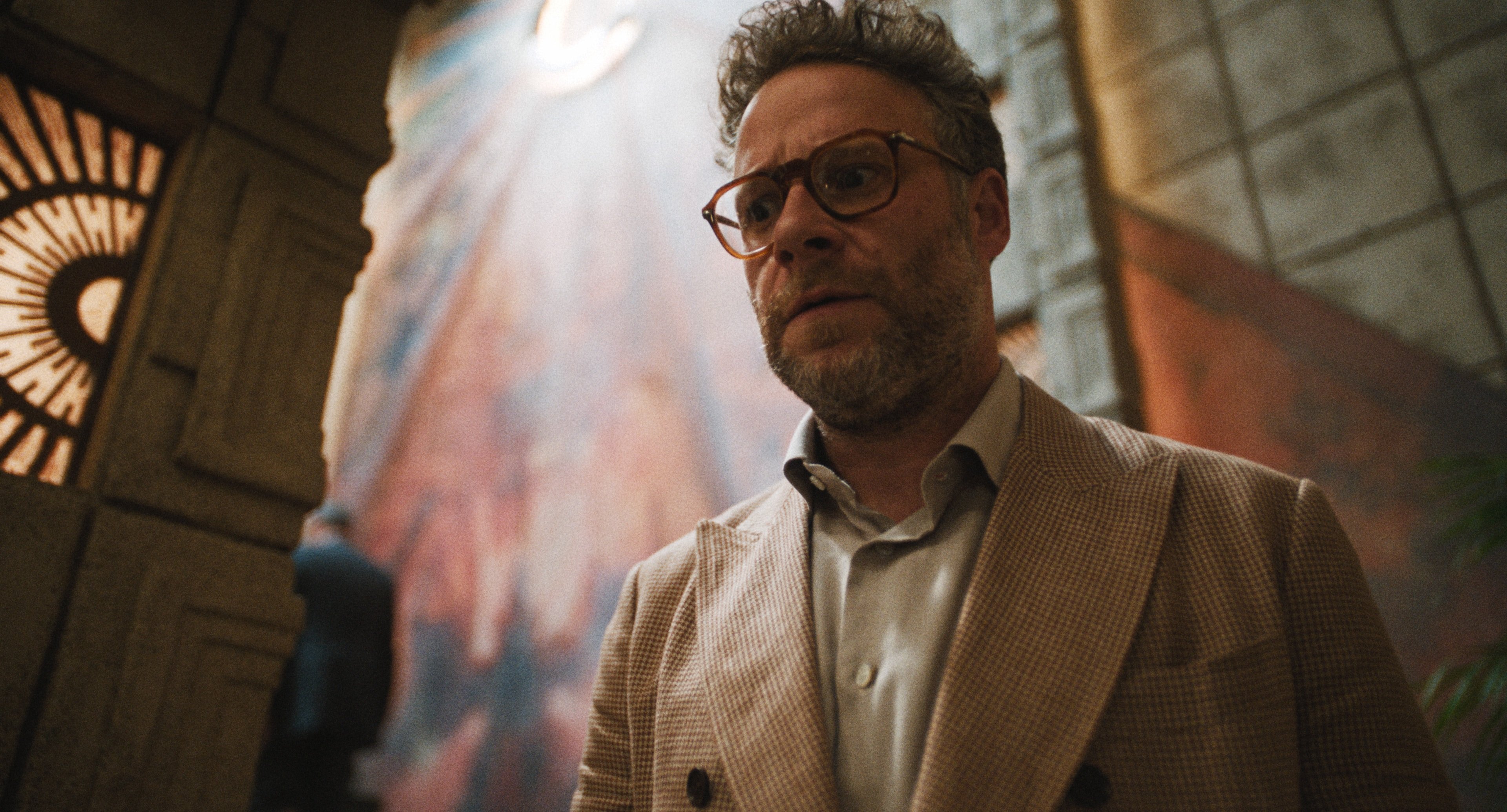
Skewering Hollywood in The Studio
Cinematographer Adam Newport-Berra captures this wry showbiz comedy with visual energy.
Co-directed by Evan Goldberg and Seth Rogen, The Studio presents a stylized satire of Hollywood. In it, Matt Remick (Rogen), the new head of Continental Studios, must balance corporate pressures and creative ambitions while chasing celebrity approval to keep his movies relevant.
Much of the Apple TV+ show’s visual impact is owed to director of photography Adam Newport-Berra (The Last Black Man in San Francisco, The Bear, Euphoria). While the series is presented as a comedy, Newport-Berra approached it with the rigor of a feature film.
“We wanted The Studio to feel timeless.”
— cinematographer Adam Newport-Berra
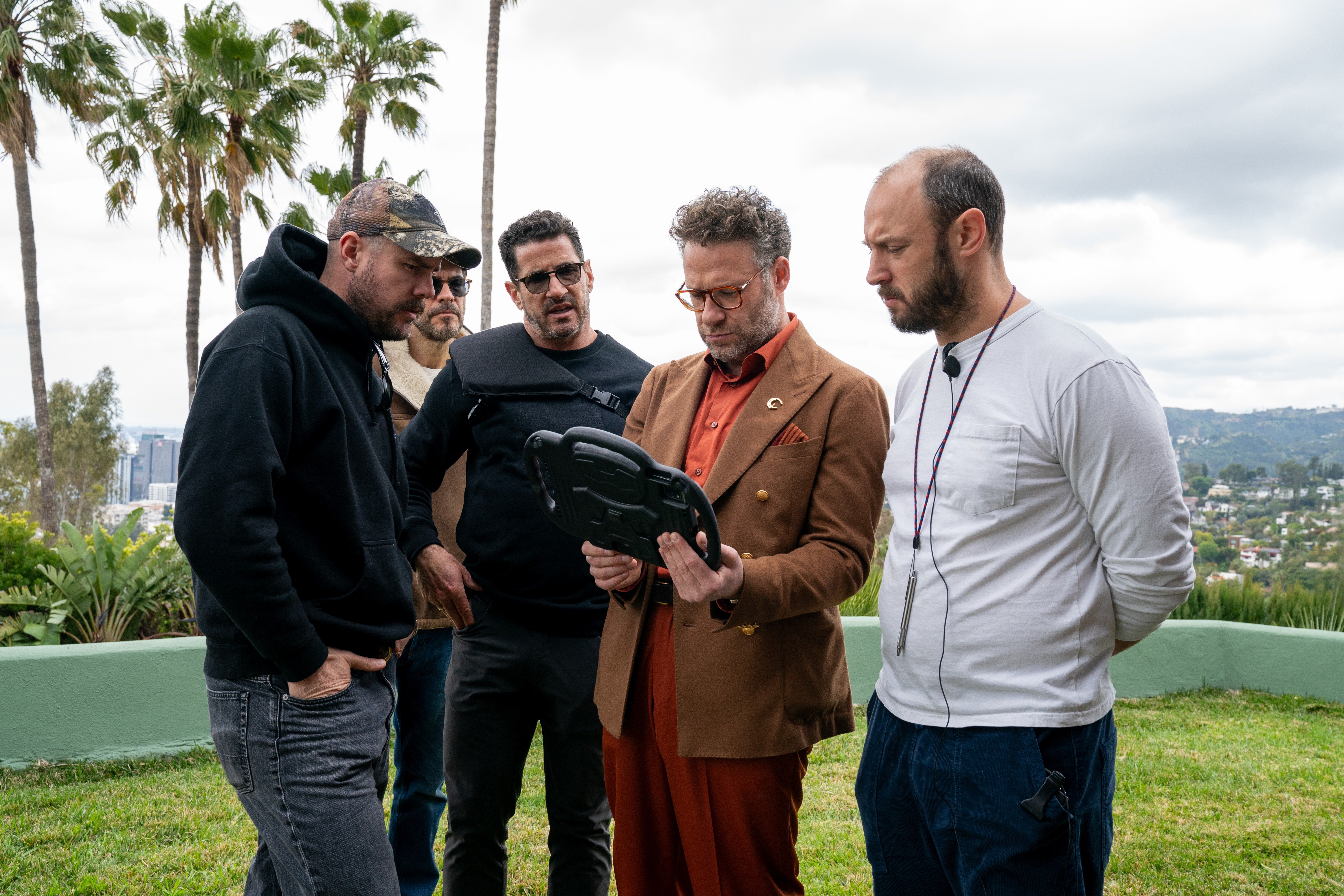
Origins
Newport-Berra learned about the project through his agent. He was initially drawn by the challenge of shooting the entire series using oners — extended, unbroken shots that follow characters through a scene instead of traditional multi-angle coverage. “I love oners,” he says, adding that as he read the first few scripts, he “fell in love with the material.”
The cinematographer poured his passion into a 90-page lookbook — what Goldberg called a “novella” — filled with visual references, proposed shot ideas, and inspirations. “I just pulled out all the stops because I really wanted the project,” he recalls.
The visual brief was to create something “anxiety-inducing, dynamic, and fast-paced” while remaining “elegant and beautiful.” This meant rich production design, period-aware costume and makeup, and a grounded, expressive camera style. “We wanted The Studio to feel timeless,” says Newport-Berra.
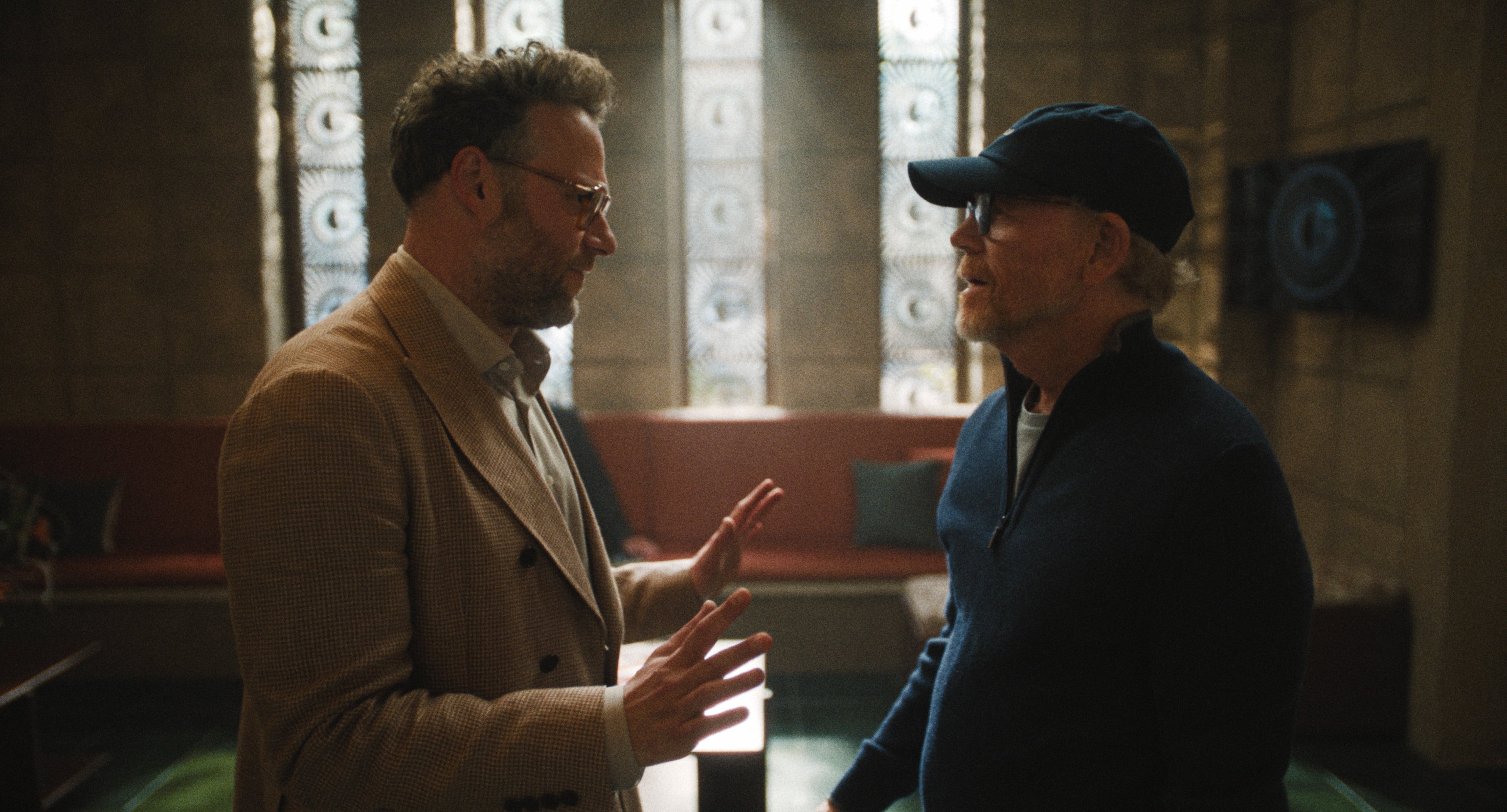
Classic References
Several key cinematic influences also shaped Newport-Berra’s approach to the visual storytelling. He cites the 1957 Soviet war drama The Cranes Are Flying, directed by Mikhail Kalatozov, as his primary inspiration. “They were using ropes and pulleys and cranes lifting humans,” he says. “It was handmade and scrappy — and still some of the most incredible handheld camera work I’ve ever seen.” The director’s other credits include I Am Cuba (1964), also shot by Sergey Urusevsky, which is equally celebrated and emulated for its complex, single-shot coverage, in films including Boogie Nights (Robert Elswit, ASC) and shows such as The Marvelous Mrs. Maisel (M. David Mullen, ASC).
Other references included Robert Altman’s The Player (shot by Jean Lépine) for its satirical tone and long takes, and Alfonso Cuarón’s Children of Men (Emmanuel Lubezki, ASC, AMC), for its immersive handheld sequences. Newport-Berra also noted the Dardenne brothers’ humble, improvised-feeling yet meticulously crafted handheld camerawork. “I was always trying to figure out how to make it look as effortless as they did,” he says.
Digital Tools/Filmic Style
Though the overall series maintains a consistent look, the team leaned into genre-specific visuals where appropriate, such as the film noir-themed episode “The Missing Reel,” in which a can of 35mm footage from an expensive scene is stolen and must be recovered. “It was very clear that we wanted to homage that style,” Newport-Berra notes. “A lot of the episode is set at night with impressionistic lighting. As a bonus, since the episode mostly takes place on a movie set, when I wanted to light something, I could have the gear right in the shot.”
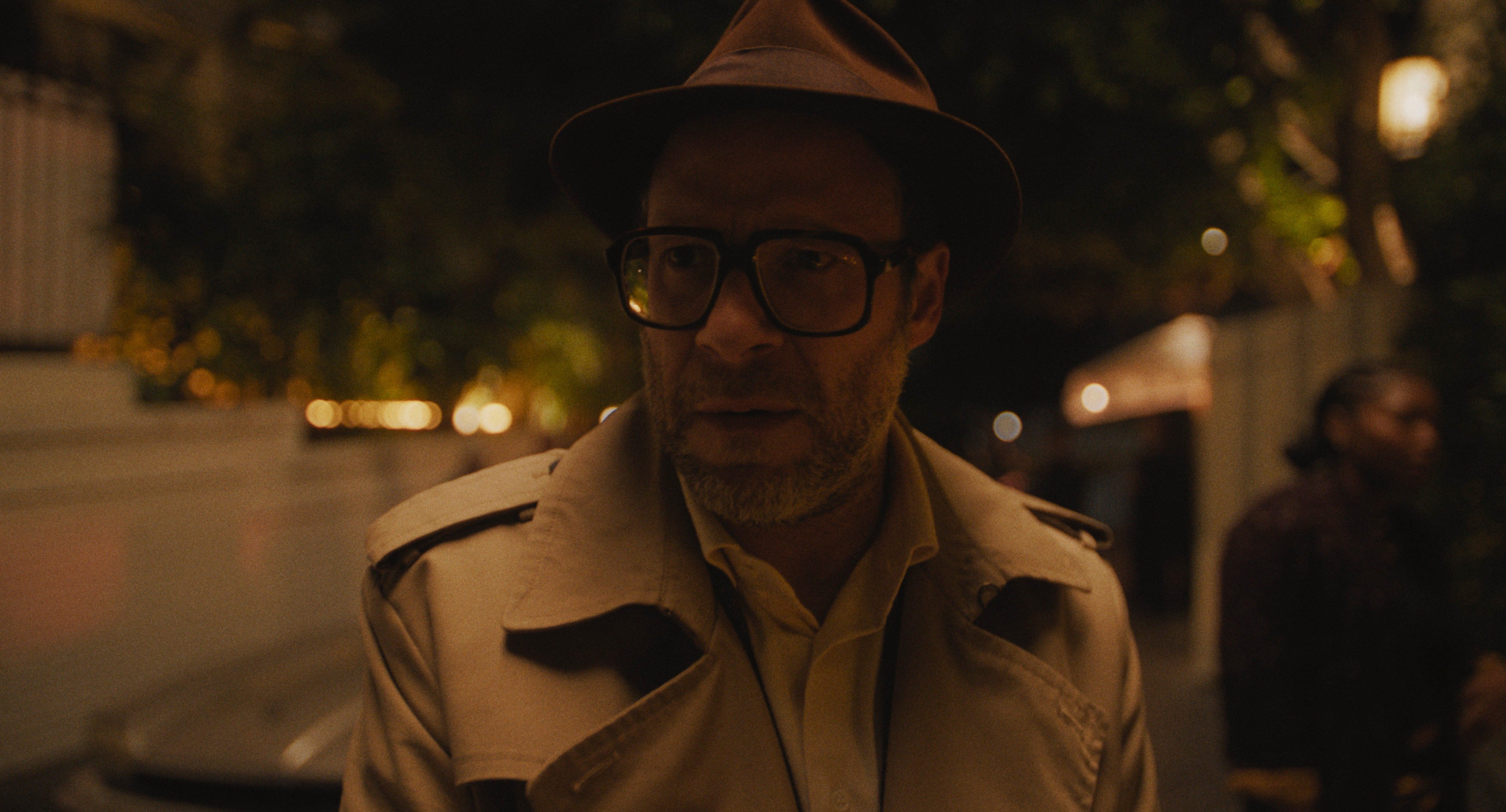
Despite the analog vibe, The Studio was shot digitally using the Arri Alexa 35. “We wanted a filmic look,” the cinematographer says. “The Alexa 35 has a texture and a grain structure built into it.”
Capturing digitally also offered lighter rigs and faster turnarounds. “Because we had so many long takes with complex setups, a film camera would have needed a large 1,000-foot magazine,” Newport-Berra observes. “Shooting digitally, we had a much smaller camera we could put in many different places. Most of the special rigs were custom built by our key grip Adam Kolegas and co-designed with our camera team.”
Optics and VFX
The production used a 21mm/T1.3 Zeiss/Arri Master Prime lens. “Seth and Evan were like, ‘one camera, one lens’ — and I loved that idea,” Newport-Berra says. The 21mm enabled close-ups and deep focus with minimal distortion.
“We stayed wide open for most of the show because we liked the shallow depth of field for emphasizing specific characters. But in episode one, ‘The Promotion,’ we visit [fired studio head] Patty Leigh (Catherine O’Hara) at her house up in the Hollywood Hills. We stopped down four or five stops so you could see the hills and the Hollywood sign in the background.”
The team avoided adjusting ISO or aperture during takes. Instead, they used a remote-controlled, electronic variable ND filter for seamless exposure control between lighting conditions.
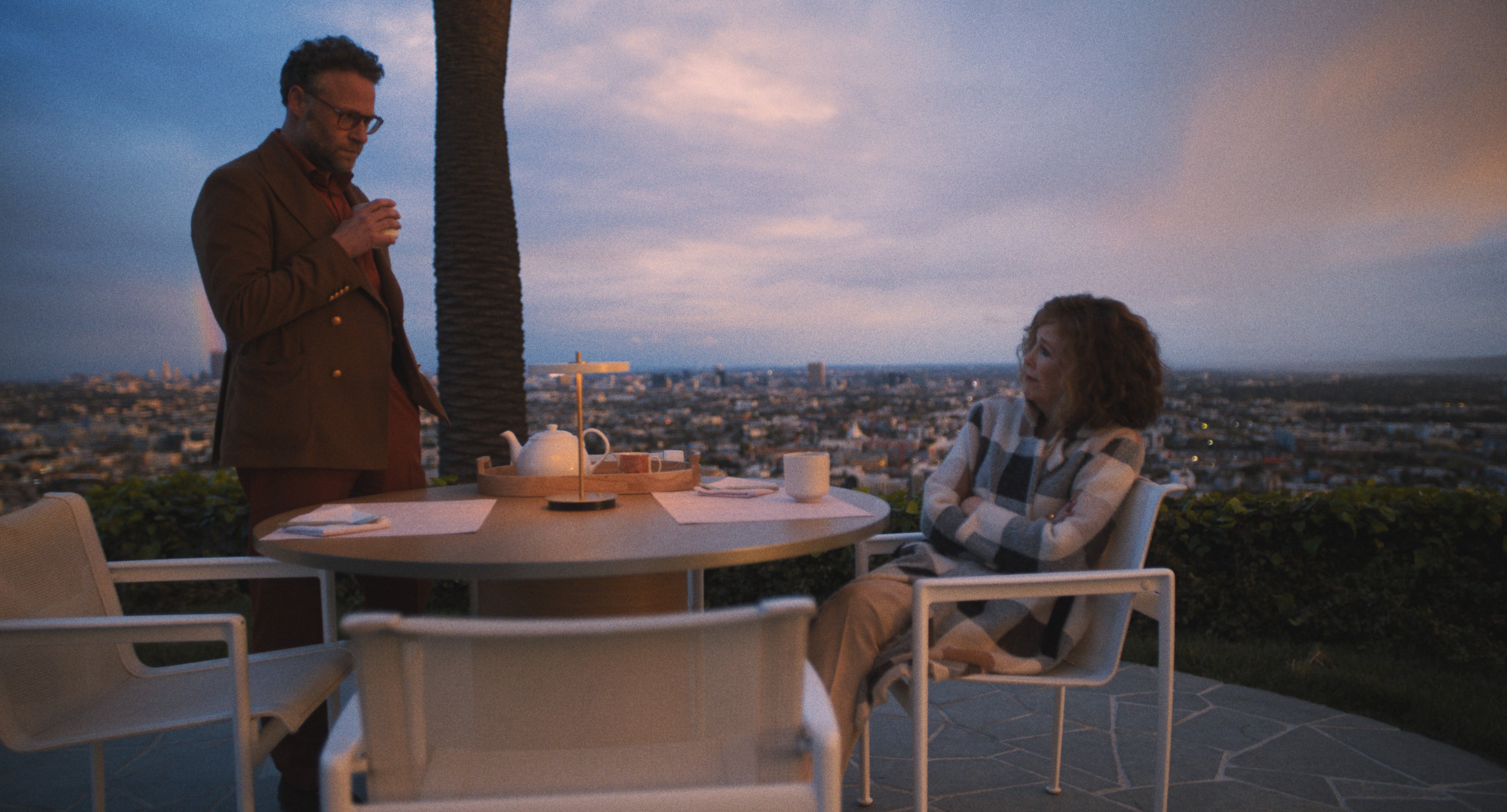
Visual effects were used to remove rig elements and stitch together separate takes. “Our VFX supervisor, Sandro Blattner, is a genius who was so tuned into the show’s aesthetic,” says Newport-Berra. “He knew how to read the room, prioritize performance, and when we could get away with something that could be fixed in post. We would often go in after a scene and shoot plates to have a map of the room in case he needed to paint something out, such as lighting units and rigging gear.”
Shot Plan
Coverage was built spontaneously during rehearsal. “Seventy-five percent of our day, every day, was just figuring it out,” Newport-Berra says. He and his team would rehearse with actors, block on set using an iPad and the Cadrage Director's Viewfinder app and refine the shot with collaborators including 1st AC Lucas Deans.
“Sometimes, we wouldn’t roll before lunch. But then, we’d be done within two hours after lunch because it’s one or two shots for the day.”
“My job is to prioritize performance, so if it means stitching days together to make a better episode, that’s way more important than the dogma of making it just one take.”
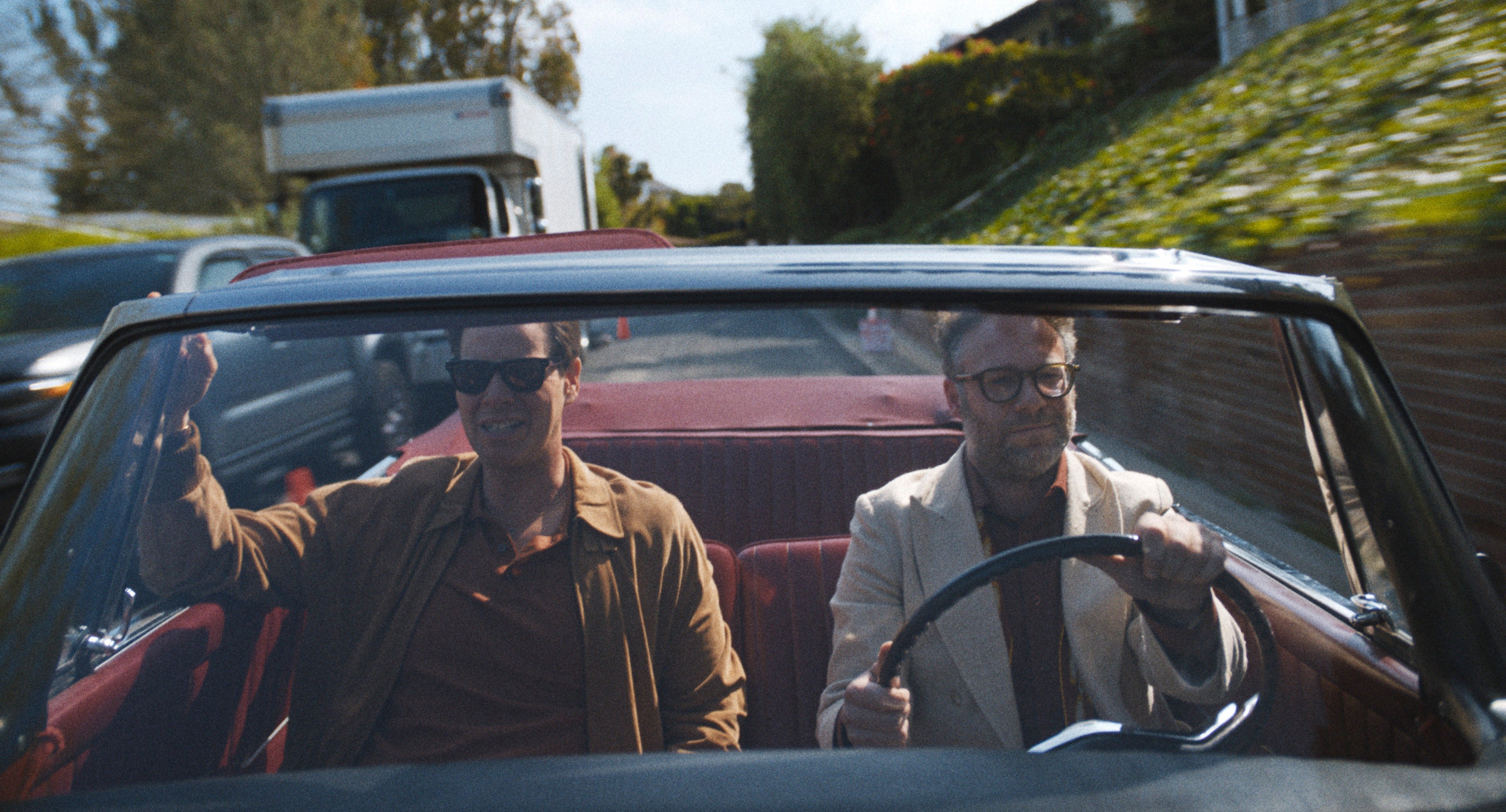
Lighting was simplified. “When I was originally envisioning how I would shoot it and working with my chief lighting technician Russell Ayer, I imagined a ton of wireless lights on a dimmer board and just programming and turning stuff on and off,” says Newport-Berra. “We decided very quickly, let’s just really stick to lighting things 360.” Production designer Julie Berghoff also built sets with ambient sources like skylights, and Newport-Berra favored “negative fill to create contrast.”
Camera Operation
The show’s camera work was also highly physical. “Honestly, 95% of the time, the camera was handheld,” Newport-Berra says. Operator Mark Goellnicht ran with the actors, navigated ramps, passed rigs mid-take, and even received the camera while rolling out of a moving car. “We always approached every scene as ‘how can we do this with just the most lo-fi gear possible and make it a human experience.’”
The team often used electromagnetic mounts for car scenes that could snap the camera to a vehicle and detach mid-shot. One standout moment — the opening of episode one within the confines of Continental Studios — involved a mid-take camera pass-off between operators, a Technocrane lift, and a seamless continuation on a balcony.
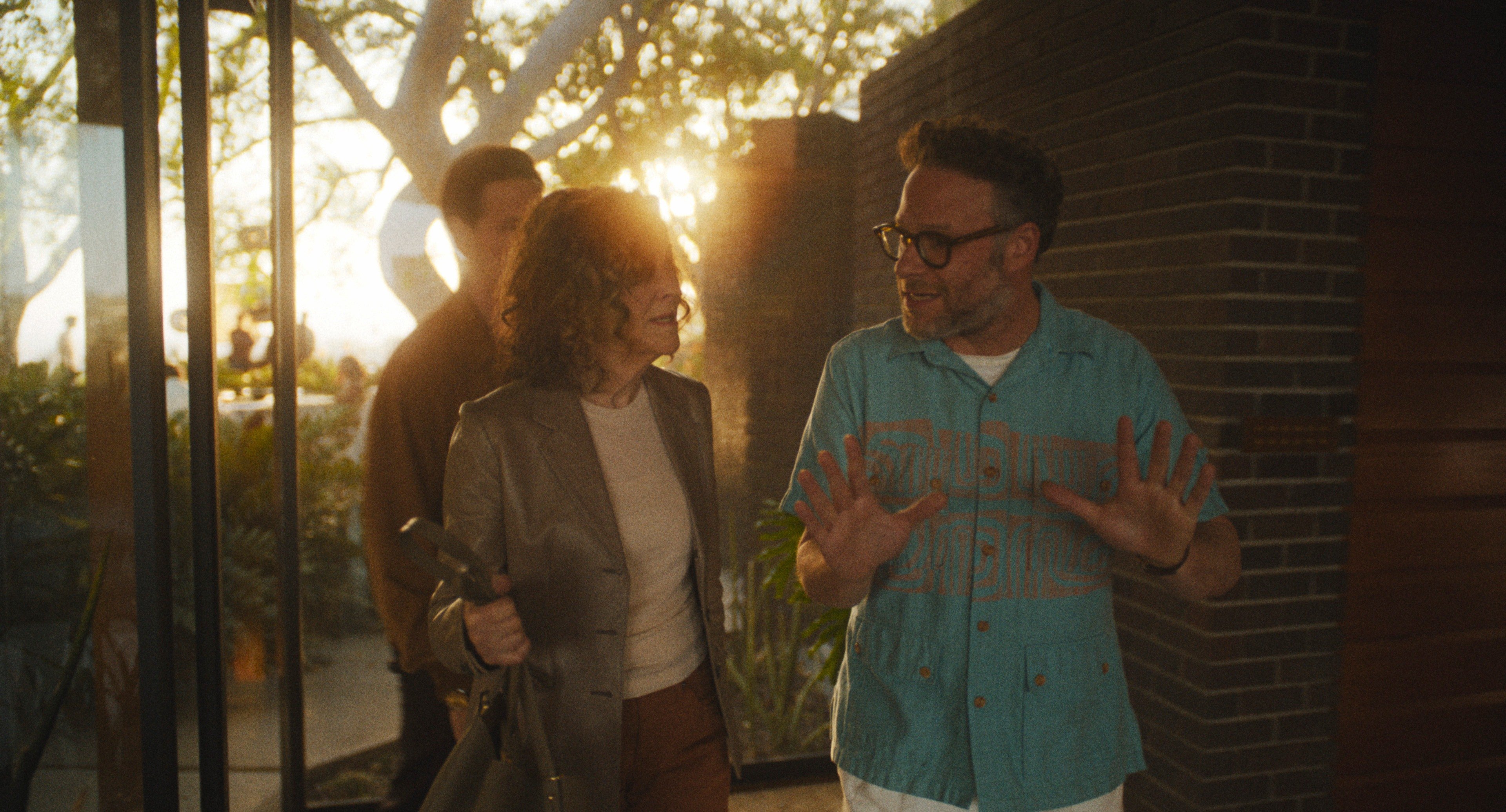
Crafting “The Oner”
The episode “The Oner” — satirizing the stress of shooting a complex scene being shot as a oner — stands out for presenting its entire story as a single continuous take, which Newport-Berra calls “a massive challenge.” The episode was stitched together from four days of shooting on location at the famed Reiner-Burchill/Silvertop residence in Los Angeles. “There was nowhere to hide anything,” he says. “We had to shoot at magic hour every day.”
Despite these hurdles, the final result feels like the luckiest single take of all time.
“I love how Seth parodies us in the dialogue by discussing movies like 1917 [shot by Roger Deakins, ASC, BSC] and how they hid cuts and stitched shots together. And then Sarah Polley’s director character insists on no cuts or stitches. My job is to prioritize performance, so if it means stitching days together to make a better episode, that’s way more important than the dogma of making it just one take.”
“I want people to appreciate this, love it, and watch movies.”
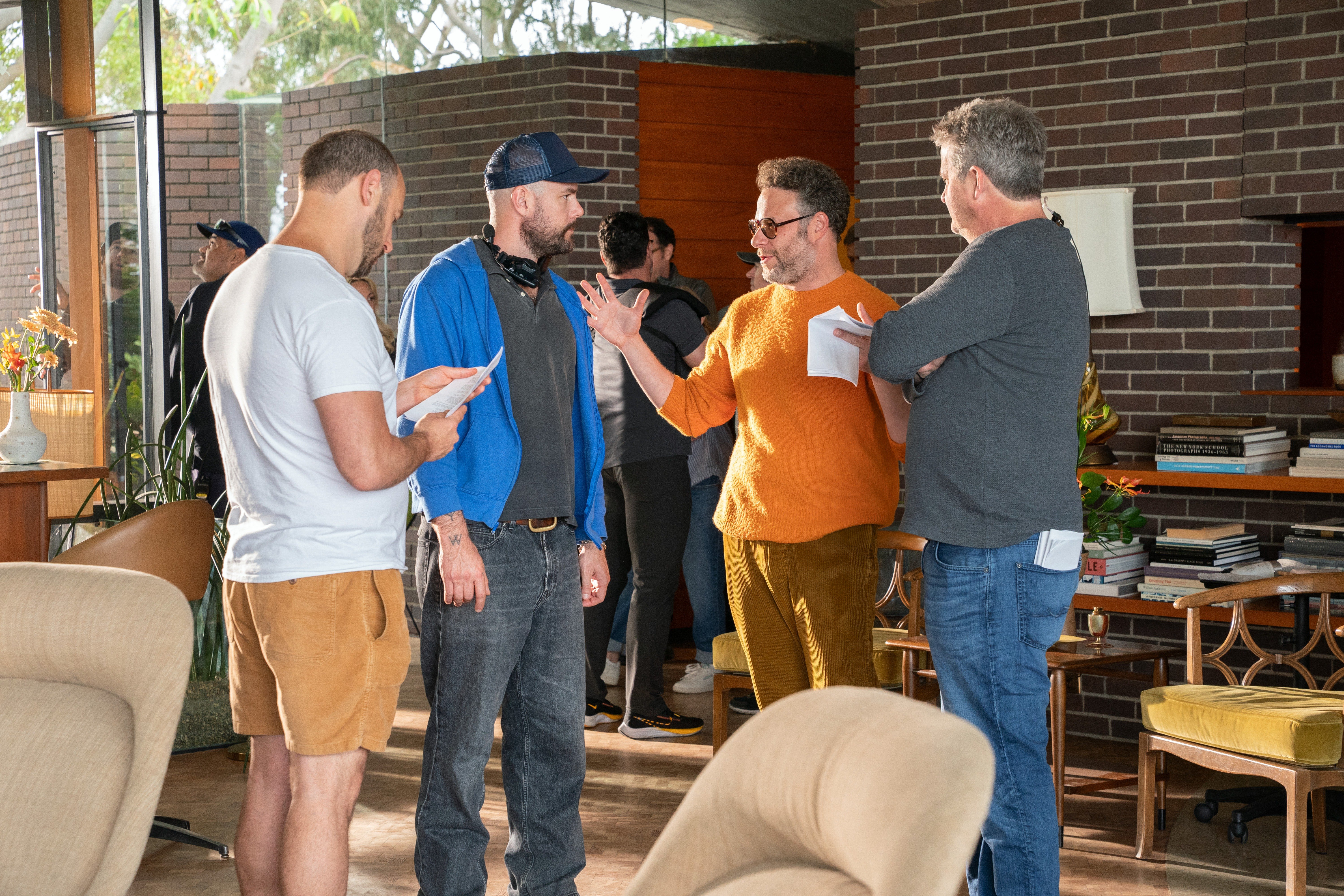
Post Workflow
Damien Vandercruyssen, senior colorist at Harbor Picture Company, handled the grade. Newport-Berra created a lookbook early in production and shot tests with the actors on location to tailor the show’s LUT. “We built a LUT that was a bit broader and more forgiving than my usual because I knew we’d be backed into many tricky lighting situations,” the cinematographer says.
The Alexa 35 gave Vandercruyssen plenty of latitude to work with. “The color finish was one of the most complicated jobs I’ve done,” Newport-Berra notes. “I couldn’t always perfectly key light someone’s face for a closeup as we were shooting 360 degrees. So, Damien was able to bring out people’s eyes and add contrast and texture. He played a huge part in how amazing the show looks.”
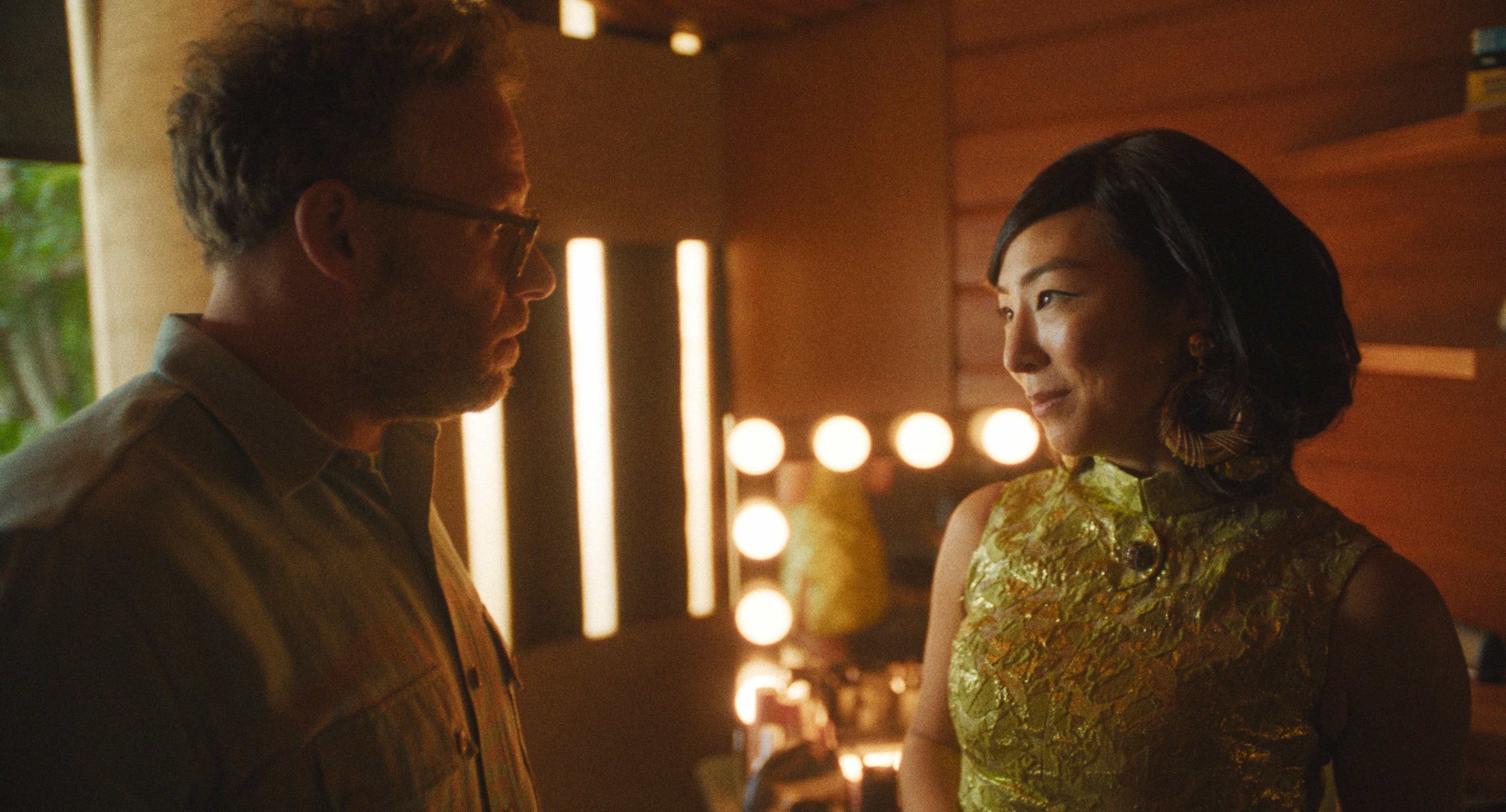
Celebrating Cinema
Newport-Berra’s goal is for viewers of The Studio to come away laughing and inspired about filmmaking. “Cinema is an art form that’s constantly under threat from other mediums,” he says. “So, it’s fun to introduce people to that world and show just how difficult it is to pull off. I want people to appreciate this, love it, and watch movies.”
A behind-the-scenes look at The Studio:






